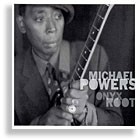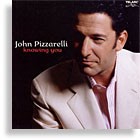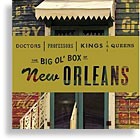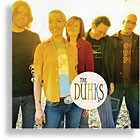Given his work ethic, it makes sense that Warren Haynes plays in a band called Gov’t Mule. A strong contender for Workaholic Guitarist of the Year, Haynes is active in three high-profile bands, and in his spare time he picks up a few solo gigs.
In the two years since we last spoke with him, he has been a primary factor in seven albums. His latest between-breaths effort is a new Mule album called Deja Voodoo, and it’s loaded with the requisite Mule ingredients – killer guitar tones, top-shelf musicianship, and songs that let Haynes, bassist Andy Hess, drummer Matt Abts, and keyboardist Danny Louis “stretch out” a little bit. We recently had a chance to ask him about it.
Vintage Guitar: So how does it work for you, playing in four bands at once?
Warren Haynes: It involves a lot of making schedules work, which is a nightmare for our office. It’d be a lot of work if I considered music work, which I don’t. And it’s a lot of being away from home, but for the best possible reasons. To have these kind of opportunities and not take advantage of them would be kind of silly.
We last interviewed you in 2002. Which projects have you had in recording since then?
We did the Hittin’ The Note Allman Brothers record, the live Allman Brothers with the DVD, the new Mule live CD/DVD, The Deepest End. I did Live at Bonaroo solo acoustic CD, and there was a little teaser before that called The Lone EP, which was a just a five-song EP. I think as far as these bands are concerned, that’s all.
I also did a few things like Jack Casady’s record and the new John Lee Hooker posthumous record, stuff like that. But I don’t have as much time anymore to do those outside projects.
The new Mule record is called Deja Voodoo. What can we expect from it, tone-wise?
Well, there’s a lot of the same classic Gov’t Mule tones that have been around for a while. And there’s a lot of new stuff. I keep trying to experiment with new sounds. It’s not like they’re drastically different, but I played a lot of [Gibson] Firebird on the record. And my rig is set up in a little different way then it was on the early records.
Now, I’ve got this setup where I can have three rigs going at one time, in any combination. So usually I’m combining my [Maven Peal] Zeta amp that I use for recording with either the Diaz Z-100 or the modified Soldano SLO-100, or a Marshall. I used both my old Marshall and my new one. Surprisingly, the new one sounded better than the old. There are some other sounds, as well – there’s a [Vox] AC30.
Usually, when I’m using the Diaz or the Marshall or the Soldano, I’m combining it with the Zeta, which fills out some of the midrange in a really cool way – just makes it a larger sound. The Zeta is definitely the cleanest tone, and the Diaz is the second-cleanest. Of course, the Marshall and the Soldano have their own patented sound, which everybody expects to hear.
Which Firebird are you playing?
Mostly it’s a new non-reverse Custom Shop instrument. I’ve been playing several of those, and I’d just gotten this new walnut-brown one shortly before the sessions. And I was really diggin’ it – it felt good, sounded good. And I think it might’ve actually got more time than did the Les Paul on this record. The Les Paul is probably on 40 percent.
Are you running both through the same signal chain?
Yeah, and just tweaking the amps accordingly if they need tweaking. Sometimes, the sounds work either way. But most of them are set up a little bit different. And a lot of times it’s a different blend between the amps by adjusting the microphones. And the Zeta, believe it or not, is facing a piece of plywood, and we’re mic’ing the plywood – aiming the microphone away from the speaker, and toward the bounce.
What’s with that?
I kinda learned that technique from my friend, Gordy Johnson, of the band Big Sugar. He’ll run his Marshalls – if there’s one in the left side and one in the right, he’ll mic the reflections so there’s different sounds. It kind of delays the sound a little bit, and you get the slap-back off of the wood, which is a nice, organic sound. It was just something we tried and liked, and ended up doing a lot. You’re able to hear the differences between the two tones more than if they were both mic’ed the same way.
What do you get from the Firebird that you like compared to the Les Paul?
It has more bite. Everything about the way it’s designed… it’s got more attack. It’s the Gibson answer to a Fender, but it also has that midrangey growl that Fenders don’t have. I’ve been hooked; Firebirds are strange instruments – they fight back a lot, they have dead spots… they’re just not the most even-keeled instruments in the world. They’re a little temperamental. They’re hard to keep in tune. But they’re worth it. You have to fight your instrument a little bit, anyway. If it’s too easy to play, then you’re not getting out of it what you could get out of it. I love the fact that I play a note and it doesn’t exactly respond the way I want it to, so I have to hit it again!
(laughs) That’s not exactly a quality most players would enjoy!
No, but there’s something about that – it’s where a lot of great blues guitar came from. People have said that the great blues guys were doing the best they could with what they had, and a lot of the best sounds we ever heard were exactly that.
Any first-takers on the album?
Yes, “My Separate of Reality” is, and “Slackjaw Jezebel.” With both of those, we didn’t have much time to think about what we were going to do. It was almost like a rehearsal. And all of the jamming on the record is live. Again, pretty much every solo is live. Though the one in “Little Toy Brain” is an overdub.
What was the reason for overdubbing that one?
I went into this record wanting to overdub more, and on a couple of tracks we played the first couple of takes without a solo because I was thinking, “It’d be nice to have the luxury of overdubbing some of the solos,” because I’m limited to what I played on the track, and I never had an excuse to rethink it. And I thought it’d be nice to get away from that a little bit. But every time we’d play a track, and the solo section came along, the band felt a bit lost if I wasn’t doing something.So I’d up playing a solo, anyway. On “Little Toy Brain,” I wasn’t sure what should be there, and it turned out to be a melodic solo, like Harrison or Clapton.
Photo: Rick Gould.
This article originally appeared in VG‘s Dec ’04 issue. All copyrights are by the author and Vintage Guitar magazine. Unauthorized replication or use is strictly prohibited.
.jpg)

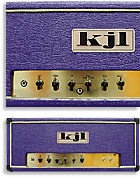
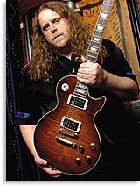
.jpg)
.jpg)
